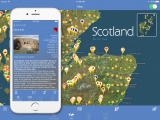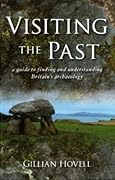<< Our Photo Pages >> Head of Work - Chambered Cairn in Scotland in Orkney
Submitted by howar on Wednesday, 25 July 2007 Page Views: 8004
Neolithic and Bronze AgeSite Name: Head of Work Alternative Name: Long CairnCountry: Scotland County: Orkney Type: Chambered Cairn
Nearest Town: Kirkwall
Map Ref: HY48341382
Latitude: 59.008329N Longitude: 2.901125W
Condition:
| 5 | Perfect |
| 4 | Almost Perfect |
| 3 | Reasonable but with some damage |
| 2 | Ruined but still recognisable as an ancient site |
| 1 | Pretty much destroyed, possibly visible as crop marks |
| 0 | No data. |
| -1 | Completely destroyed |
| 5 | Superb |
| 4 | Good |
| 3 | Ordinary |
| 2 | Not Good |
| 1 | Awful |
| 0 | No data. |
| 5 | Can be driven to, probably with disabled access |
| 4 | Short walk on a footpath |
| 3 | Requiring a bit more of a walk |
| 2 | A long walk |
| 1 | In the middle of nowhere, a nightmare to find |
| 0 | No data. |
| 5 | co-ordinates taken by GPS or official recorded co-ordinates |
| 4 | co-ordinates scaled from a detailed map |
| 3 | co-ordinates scaled from a bad map |
| 2 | co-ordinates of the nearest village |
| 1 | co-ordinates of the nearest town |
| 0 | no data |
Internal Links:
External Links:
I have visited· I would like to visit
SolarMegalith whese001 would like to visit
Davidson and Henshall report that the ruined chamber was dug before 1928, in which case when RCAMS in 1946 give the mound's height as 11' 9" this must have been measured prior to that as later authorities give a total height of 2-2.1m - the RCAMS Inventory diagram shows nothing above this surviving chamber.
It is generally accepted with a site such as this that the chambered cairn was completed long before its incorporation by the lower cairn This site, the Helliar Holm (above the lighthouse to the north of here) andHaco's Ness (on Shapinsay away to the east as you look there) stalled cairns are all intervisible - from which some intended guardianship of Shapinsay Sound has been alleged.
If you don't mind climbing a couple of fieldgates (the first chained against vehicles) then the simplest way is along the north coastline, initially following the wartime road near the waterworks and then keeping to the coast edge where the numerous small draining burns all have a smattering of stepping stones. As you come to The Castle geo (not quite a rock stack yet) you see Long Cairn across the moss to your right.
The usual route lies through Work farm, once site of a broch and perhaps a souterrain. As you come to the headland itself without wellingtons or the like even in dry weather you must take the strait route to the ridge on which the site lies. The first notice of this is a rather bulky stretch of bank or dyke less than a metre in front of the 'mound' which is presumably its western end, both of which look to be composed of earth with a few stones. This would seem designed to control access to the cairn/s, as on any other approach there is what some call rough pasture but most think of as approaching bog (Roseness in East Holm is similar though more heathery).
After passing The Castle I crossed over mushy ground, soft-going but I did avoid damper patches. On the side of the mound I could see middling-size stones, presumably from the small late structures referred to by Davidson & Henshall others perhaps connected with the reported rectangular hollow west of the (Orkney-Cromarty type) chambered mound they also believe prehistoric but not original.
Coming to the western end the inside of the hornworks (14.6m across the front of the 3m horns) looked to have a sharper, less obtuse angle than shown on plan. I wonder if they have eroded back where these 'end' appeared higher than 0.5m, though admittedly the O.S. did report this end of the mound as 0.9m in height.
Up on the mound a mere 0.2m from the back of the hornworks I found a feature not previously noted (D&H state that turf covers all except the high mound). This takes the form of an area 4.8m wide by 3.8m f-b on which lie many slabs. These are in a slight depression but as I looked back from its eastern edge a very low bank was visible. Perhaps it is a chamber of the later long cairn, but if instead this is from a second original mound we can explain why the later cairn has appeared too long hitherto (the Roseness cairn also has an apparent satellite, even lower than this).
Two metres away is a slab projecting a little, distinct from the glimpsed 'wall-faces', then 6.1m from this is the base of the main mound. The latter is about 12m across. Continuing to the back there is a 0.68 long slab with an angled top projecting 0.3m at a distance of 6.5m horizontally from the western edge, and 1.4m on at the high point a hollow filled with stones and slabs that is is 3.1m wide.
By the back end of the hollow, 1.4m from the opposite edge, can be seen 0.6m of an orthostat 1.1m wide (I think D&H have this as 1.5 by 0.65 [I was wary of getting too close so may have missed a bit] and the hollow as 2.1m f-b). Unfortunately though the RCAMS Inventory shows this chamber on side elevation it is not indicated on the plan view, because half-a-metre to the right of what I call B1 (the feature by the western hornworks being A) is another slab- & stone-filled circular hollow I call B2. This is 1.7m across and fractionally lower on the hill (probably relevant is that D&H report orthostats in the chamber whose tops are at a level 0.65m beneath that of the largest slab). A second stall or possibly another chamber I would imagine (it could always be that the turf between B1 and B2 is simply the result of archaeological methodology).
Then, just behind this, the other side of an imaginary line from B1's largest orthostat is a depression 2.3m wide and 2.2-2.6m f-b. Not much stonework pokes through B3 but I would hazard that this represents a robbed stall/chamber (hence its apparently more downslope position) resulting from digging prior to the 1920's period in which B1 is likely to have been excavated. From the eastern edge of B1 to the mound base behind is 6m horizontally.
In my initial approach from The Castle circling clockwise the south horn of the western hornworks was very visible as a long broad grassy strip with a rounded top, looking like a pseudopod or starfish arm. These hornworks have been shown to project 8m and be 24.7m across, the S horn surviving over twice the height of its NE counterpart at 0.7m to the latter's 0.3m. Which would be how I missed the latter initially. At the moment the forecourt is very clearly defined by a singular display of a bed of reeds.
Though the ground about the site is mostly damp and springy this is boggiest on the southern side where it slopes down to the cliffs. I tried to get back this way but it was way 'boggy'. I went along the southern clifftop but had to stop where a drystane fieldwall came hard against it. At this spot there's a girt big pile of slabs 3-5' long and maybe 6" thick, like a fallen stack of dominoes. Followed the wall back up to a gate, but with the field having kie in it I left well alone. This would seem to be the normal route to the headland. Further up another gate had a sloped top 'standing stone' over five feet tall as one of the gateposts.
You may be viewing yesterday's version of this page. To see the most up to date information please register for a free account.
























These are just the first 25 photos of Head of Work. If you log in with a free user account you will be able to see our entire collection.
Do not use the above information on other web sites or publications without permission of the contributor.
Click here to see more info for this site
Nearby sites
Key: Red: member's photo, Blue: 3rd party photo, Yellow: other image, Green: no photo - please go there and take one, Grey: site destroyed
Download sites to:
KML (Google Earth)
GPX (GPS waypoints)
CSV (Garmin/Navman)
CSV (Excel)
To unlock full downloads you need to sign up as a Contributory Member. Otherwise downloads are limited to 50 sites.
Turn off the page maps and other distractions
Nearby sites listing. In the following links * = Image available
2.0km N 6° Helliar Holm Broch or Nuraghe (HY48591579)
2.6km NNW 336° Setter Noost* Ancient Village or Settlement (HY47301621)
2.9km NW 326° Twi Ness* Cairn (HY46761625)
3.1km NE 35° Broch of Steiro* Broch or Nuraghe (HY50191635)
3.6km NE 52° Howe Hill (Howe Farm)* Ancient Village or Settlement (HY51171599)
3.9km SSW 192° Berstane Broch* Broch or Nuraghe (HY475100)
4.0km ENE 73° Hacksness (Shapinsay) Cairn (HY52181491)
4.3km SW 230° Kirkwall Sculptured Stone (HY450111)
4.3km SE 144° Yinstay* Ancient Village or Settlement (HY50841031)
4.5km SW 228° Kirkwall Sculptured Stone (HY44941087)
4.5km SSW 198° Tower Hill (Orkney)* Round Barrow(s) (HY469095)
4.6km SW 229° Tankerness House Museum* Museum (HY44851086)
4.6km WSW 242° Grain Earth House* Souterrain (Fogou, Earth House) (HY442117)
4.6km SW 229° The Orkney Museum* Museum (HY448108)
4.9km W 260° Lower Saverock* Not Known (by us) (HY43511300)
5.0km WSW 257° Saverock (2)* Ancient Village or Settlement (HY43481280)
5.0km WSW 237° Pickaquoy* Ancient Village or Settlement (HY44071116)
5.1km NE 52° Mor Stein* Standing Stone (Menhir) (HY52401685)
5.4km S 190° Grimsquoy* Round Barrow(s) (HY473085)
5.7km SSE 147° The Howie of The Manse* Broch or Nuraghe (HY514090)
5.7km NNE 22° Odin Stone* Standing Stone (Menhir) (HY506191)
5.8km ENE 63° Castle Bloody* Souterrain (Fogou, Earth House) (HY53581644)
5.9km W 269° Ramberry Cairn Chambered Cairn (HY42401383)
5.9km SE 139° Loch of Tankerness* Ancient Village or Settlement (HY522093)
6.0km SSE 152° Whitecleat* Holy Well or Sacred Spring (HY511085)
View more nearby sites and additional images






 We would like to know more about this location. Please feel free to add a brief description and any relevant information in your own language.
We would like to know more about this location. Please feel free to add a brief description and any relevant information in your own language. Wir möchten mehr über diese Stätte erfahren. Bitte zögern Sie nicht, eine kurze Beschreibung und relevante Informationen in Deutsch hinzuzufügen.
Wir möchten mehr über diese Stätte erfahren. Bitte zögern Sie nicht, eine kurze Beschreibung und relevante Informationen in Deutsch hinzuzufügen. Nous aimerions en savoir encore un peu sur les lieux. S'il vous plaît n'hesitez pas à ajouter une courte description et tous les renseignements pertinents dans votre propre langue.
Nous aimerions en savoir encore un peu sur les lieux. S'il vous plaît n'hesitez pas à ajouter une courte description et tous les renseignements pertinents dans votre propre langue. Quisieramos informarnos un poco más de las lugares. No dude en añadir una breve descripción y otros datos relevantes en su propio idioma.
Quisieramos informarnos un poco más de las lugares. No dude en añadir una breve descripción y otros datos relevantes en su propio idioma.